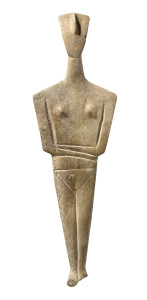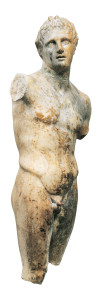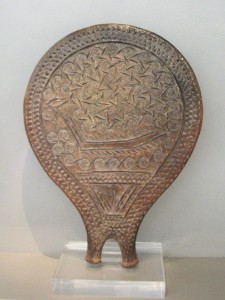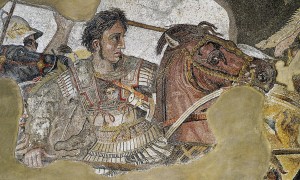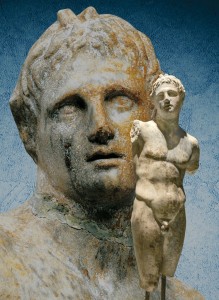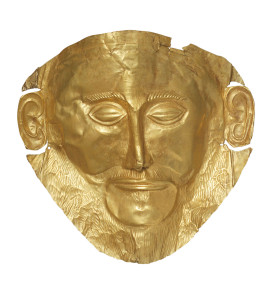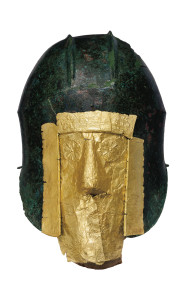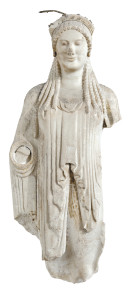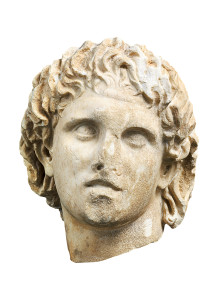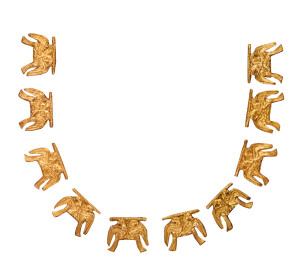Pointe-à-Callière
Dec 12. 2014 to Apr. 26 2015
The exhibition spans over 5,000 years of Greek history and culture and takes visitors on an exceptional and fascinating journey back to the origins of the cradle of Western civilization, its heritage and the traces it has left in the hearts and minds of the Greek people.
A fascinating period
Greek Antiquity is a rich and spell-binding period, a time populated by mythical heroes and historical figures, under the watchful gaze of the gods on Mount Olympus. The exhibition is divided into six zones that introduce us to this great civilization and showcase rare and priceless artifacts. Visitors will meet many famous characters in Greek history, from Homer to Aristotle, Plato, King Philip II of Macedon and King Leonidas of Sparta. The heritage of ancient Greece, which we can still see all around us today in our politics, philosophy, arts and literature, mathematics, architecture, medicine and sports, is clearly illustrated in the exhibition. Visitors are invited on a tour of Greek history, starting in the 6th millennium BCE, explaining all these roots.
From Agamemnon and the siege of Troy…
We learned about the exploits and adventures of the heroic and legendary figures in the Trojan War through Homer’s epic poem the Iliad. Led by Agamemnon, the Greeks sailed a thousand ships all the way to Troy, where the Trojan Prince Paris was holding Helen captive. After laying siege to the city for ten years, the Greeks left an unexpected gift outside the gates: a giant wooden horse, filled with Greek soldiers. The unsuspecting Trojans brought the horse inside the city walls, leading to the fall of their city.
In the 19th century, German archaeologist Heinrich Schliemann, convinced that the accounts in the ancient Iliad were historically accurate, found “Royal Tombs” at Mycenae containing the remains of ancient elites and their fabulous grave goods. Schliemann was in no doubt that these remains were in fact those of Agamemnon’s. The exhibition showcases objects from the tombs of the Grave Circle A, including two magnificent golden burial masks originally attributed to Agamemnon. One of them, the original golden mask, has in fact never been shown outside Greece before.
… to Alexander, larger than life
The exhibition takes us all the way up to the days of Alexander the Great, a larger-than-life figure who was only 20 years old when his father, Philip II, was assassinated. But Alexander was ready to succeed him, thanks to his education, his training and the formidable Macedonian army. Within barely a single generation, the ancient world was transformed from a series of independent city-states into a unified empire under Alexander the Great. The young prince who became king, emperor then god in the eyes of the world, died of a malignant fever at the age of 32. But his legend survived, as did Greece’s extraordinary legacy to the Western world.
The Golden Age of Ancient Greece
Between these two crucial figures, the exhibition focuses on the Golden Age of ancient Greece, in the 5th and 4th centuries BCE, when philosophy, theatre and the visual arts flourished, particularly in Athens. This was also the birthplace, under Pericles, of Greece’s greatest gift to humanity: democracy, government by the people. For the first time, citizens could express themselves, debate issues and vote. The exhibition also looks at the founding of the Olympic Games in 776 BCE, when athletes converged in Olympia from all Greek city states to take part in the Games.
Treasures of humanity
Among the highlights of the exhibition are a number of items never before displayed outside Greece: gold offerings from the royal tombs of Mycenae, including the mask that Schliemann first associated with Agamemnon, as well as a double-eagle necklace worn by one of the deceased, dated to the 16th century BCE.
Elsewhere in the exhibition, visitors will be able to admire a marble figurine from the island of Amorgos in Cyclades, dating to the 3rd millennium BCE and a superb ritual vase from Minoan Crete. There will also be bronze helmets with gold funerary masks from the graves of the Bottiaean rulers, not to mention a magnificent funerary vase illustrating the scene of Achilles avenging the death of his friend Patroclus, from the island of Delos and dating to the late 6th century BCE.
They will also see sculptures of Homer and other famous historic figures, and a superb votive relief to Asklepios, showing the god of medicine leaning on his staff, around which a snake is coiled, accompanied by his children as he receives the tributes of mortals whom he has cured. Lastly, there is a magnificent gold wreath of Queen Meda featuring two incredibly lifelike branches of myrtle, an aromatic plant, symbol of immortality, associated with goddess Aphrodite.
- Female figurine Découverte à Amorgos, l’île la plus orientale des Cyclades, cette figurine de marbre semble porter à l’arrière une coiffe ou une coiffure particulière. Amorgos, 2800-2300 avant notre ère, Musée archéologique national, Athènes
- Marble statue of Alexander as the God Pan The tiny horns on either side of the forehead suggest that this young man represents Pan, the god of wildlife, and indicate that this masterpiece is probably a replica of one of the earliest Hellenistic statues of Alexander by Lysippus. Pella, ca. 280 BCE, Archaeological Museum of Pella
- “Cycladic “frying pan” with ship” by Phso2 – Own work.
- Queen Meda’s wreath In ancient Greece, wreaths of flowers or branches – a sign of victory, honour and joy – were indispensable for festivities. Gold wreaths were originally destined for representations of gods, but in the 4th century BCE became fashionable for kings, queens and the wealthy as well. Aigai, antechamber, Tomb of Philip II, 336 BCE, Museum of the Royal Tombs of Aigai, Vergina
- Gold replica of the “Mask of Agamemnon” This one-of-a-kind replica was produced in exactly the same way as the mask that Schliemann ultimately attributed to Agamemnon. Today, this face is one of the most celebrated symbols of Greek history. National Archaeological Museum, Athens
- Dagger The triangular blade of this dagger is a masterpiece of Mycenaean smithing. From base to tip, the spiral decoration was perfectly scaled to the blade’s narrowing surface. This is the first time it has been displayed outside of Greece. Mycenae, Circle A, Grave IV, second half of the 16th century BCE, National Archaeological Museum, Athens
- Helmet and funerary mask Many precious objects were unearthed at the cemetery of Archontiko, including this bronze and gold helmet. The mask is one of the earliest to have been found so far in northern Greece. Archontiko, Tomb 279, mid-6th century BCE, Archaeological Museum of Pella
- Koré This Greek kore of Parian marble from the late 6th century BCE decorated a temple in the Acropolis in Athens. In the 7th and 6th centuries BCE, statues of young women (kore, plural korai) — larger than life-size at the beginning and life-size later on — were placed in Greek sanctuaries as offerings to the gods or served as grave markers. Athenian Acropolis, 520–510 BCE, Acropolis Museum, Athens
- Marble sculpture of Alexander the Great Upon becoming master of a large part of the ancient world, the young Alexander introduced Greek culture to Asia and imposed the use of Greek on many peoples. He also founded no fewer than 70 towns in the East modelled on Greek city-states. Pella, late 4th century BCE, Archaeological Museum of Pella
- Double-eagle necklace This gold necklace was worn by one of the deceased discovered in the “Agamemnon grave.” Each pendant features a double eagle, also depicted on the weapons of Mycenaean nobles. It is displayed here for the first time outside Greece. Mycenae, Circle A, Grave ?V, second half of the 16th century BCE, National Archaeological Museum, Athens
